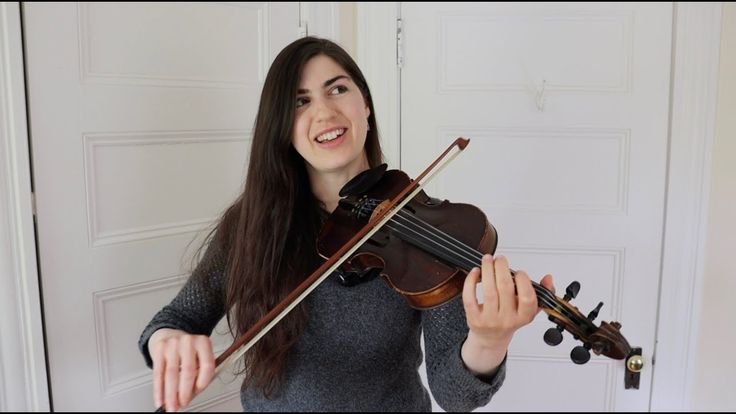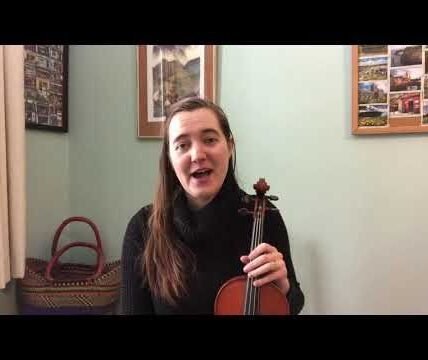Improvisation is the heartbeat of jazz and folk music, giving fiddle players room to express creativity and connect with their audience in unique ways. For many musicians, mastering improvisation can seem daunting, but with the right approach, it can become a deeply enjoyable and fulfilling part of your playing. This guide will provide actionable steps to build your improvisational skills, helping you sound like a pro whether you’re jamming with friends or performing on stage.
Understanding Scales and Modes
Scales and modes are the building blocks of improvisation. A strong grasp of these fundamentals is essential to create melodies that fit seamlessly into jazz or folk music.
- Start with the Basics: Learn major and minor scales in different keys. The most commonly used scales in folk and jazz include G major, A minor, and D major.
- Explore Modes:
- For jazz, focus on modes like Dorian, Mixolydian, and Locrian to add richness to your solos.
- For folk, explore the Aeolian and Ionian modes to match traditional melodies.
- Pentatonic Scales:
- Major Pentatonic is a great fit for uplifting folk tunes.
- Minor Pentatonic works well in bluesy or melancholic contexts often seen in both jazz and folk.
Practice these scales until you can move through them effortlessly, as they will form the foundation for your improvisations.
Understanding Chord Progressions
Improvisation often revolves around playing within the structure of a song’s chord progressions. Recognizing and working with these underlying harmonies is critical.
- Learn Common Progressions:
- Jazz relies heavily on ii-V-I and I-vi-ii-V progressions.
- Folk music frequently incorporates I-IV-V (e.g., G-C-D) progressions.
- Chord Tones:
- Focus on the root, third, fifth, and seventh notes of each chord while improvising. These tones naturally complement the progression and give your playing a cohesive sound.
- Use Passing Tones:
- Add interest by incorporating passing tones that transition smoothly between chord tones without clashing.
Understanding how melodies interact with chords will allow your improvisation to sound intentional and musically grounded.
Develop Rhythmic Awareness
Improvisation isn’t just about the notes you play—it’s also about timing and rhythm. By developing rhythmic sensitivity, your solos will have more character and groove.
- Syncopation:
- For jazz, practice off-beat phrasing and syncopation to achieve the genre’s trademark swing.
- Folk Rhythms:
- Familiarize yourself with common folk rhythms like jigs (6/8) or reels (4/4) to adapt your phrasing accordingly.
- Experiment with Note Durations:
- Combine long holding notes with bursts of short phrases to create dynamic contrast.
Use a metronome or backing track to build your rhythmic precision and internalize different time signatures found in jazz and folk tunes.
Focus on Phrasing and Expression
Phrasing and dynamics are what make an improvised solo memorable. Crafting your phrases effectively will help you connect emotionally with your audience.
- Think in Sentences:
- Approach your solo like a conversation. Alternate between “short sentences” (brief motifs) and “long sentences” (extended runs) to create a narrative flow.
- Use Dynamics:
- Vary your bow pressure and speed to emphasize specific notes or add drama. For example, play softly during introspective moments, and build up to louder, energetic bursts.
- Leave Space:
- Don’t overplay. Strategic pauses create tension and allow your audience to process your musical ideas.
Listen to recordings of seasoned jazz and folk fiddlers to study how they phrase their melodies and build emotional arcs within their solos.
Train Your Ears
Improvisation relies heavily on your ability to trust your ears and respond intuitively to the music around you. Ear training is essential for becoming a confident improviser.
- Learn by Listening:
- Play along with recordings of tunes, trying to replicate phrases by ear rather than relying on sheet music.
- Identify Intervals:
- Practice recognizing intervals (e.g., major third, perfect fifth) to better understand relationships between notes.
- Sing Your Solos:
- Singing potential solo lines before playing them can help you internalize melodies and stay connected to the music.
Over time, improved ear training will make your improvisations more fluid and instinctive.
Use Backing Tracks for Practice
Backing tracks are a powerful tool for learning improvisation in a low-pressure environment.
- Jam Online:
- Explore resources like iReal Pro, which provides customizable backing tracks in various keys and styles.
- YouTube also offers free jazz and folk backing tracks of all levels.
- Practice Progressions:
- Focus on looping specific progressions to gain confidence in a controlled setting.
- Experiment Freely:
- Use backing tracks to test new ideas, regardless of whether they work perfectly. This freedom will enhance your creativity and confidence.
Practicing regularly with accompaniment mimics real jam sessions and helps you apply new techniques in a musical context.
Study and Imitate Professionals
Learning from accomplished musicians is one of the best ways to elevate your improvisational skills.
- Listen to the Masters:
- Jazz icons like Stéphane Grappelli and Regina Carter offer masterclasses in improvisation through their recordings.
- Folk legends like Natalie MacMaster and Aly Bain illustrate how to combine tradition with personal style.
- Transcribe Solos:
- Analyze and learn iconic solos by ear. Understanding what makes these performances special can help you replicate and innovate.
- Attend Performances:
- Seeing skilled musicians live can offer inspiration and reveal techniques that recordings may miss.
Immerse yourself in the work of great fiddlers to expand your vocabulary and find your own voice.
Build Speed Gradually
Fast, fluid playing is often a hallmark of great solos, especially in styles like jazz and bluegrass. However, speed comes from precision, not the other way around.
- Start Slow:
- Practice scales, arpeggios, and runs at a tempo where you can play without mistakes.
- Use a Metronome:
- Gradually increase speed in small increments once you’ve achieved accuracy at a slower pace.
- Focus on Smooth Transitions:
- Work on connecting phrases cleanly as you increase speed.
Approaching speed methodically ensures that technique and expressiveness are never sacrificed.
Play in Group Settings
Improvisation is often a collaborative act, and playing with others can challenge and refine your abilities.
- Join Jams:
- Sit in at local jam sessions to practice improvising on the spot in a supportive environment.
- Collaborate Across Instruments:
- Playing alongside guitarists or pianists can help you learn how to respond to harmonic and rhythmic cues.
- Experiment with Call and Response:
- Trade licks with another musician, mimicking their phrases or responding with your variations.
Group sessions provide valuable learning experiences and help you adapt to the unpredictability of live music.
Final Thoughts
Improvising on the fiddle like a jazz or folk pro might seem overwhelming at first, but it’s achievable with the right strategies. Focus on mastering scales, understanding chord progressions, and developing rhythmic precision. Use phrasing, dynamics, and practice tools like backing tracks to refine your creative voice, and don’t shy away from listening to and learning from the greats.
Improvisation is as much about freedom as it is about technical skill. Explore, experiment, and enjoy the process—it’s what makes music truly come alive.





